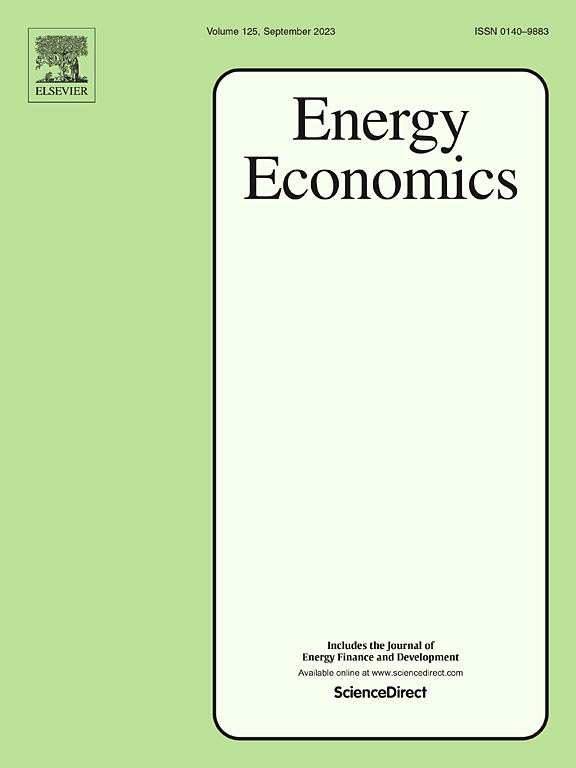如何通过数字与实体经济的融合提升中国全要素能源效率:来自动态QCA分析的新证据
IF 14.2
2区 经济学
Q1 ECONOMICS
引用次数: 0
摘要
为了应对全球气候挑战和中国的区域能源效率差异,本研究通过对中国30个省份(2012 - 2022)的动态定性比较分析(QCA),确定了数字-实体经济一体化(DRI)如何提高全要素能源效率(TFEE)。研究结果揭示了三个关键结论。首先,虽然实现高TFEE没有严格的单一条件,但数字基础设施和数字金融的重要性已经显著增加。数字基础设施通过优化资源配置和促进产业协同来提高能源效率,数字金融通过绿色信贷和资本优化来发挥作用。其次,提出了三种主要的产业驱动路径:数字产业驱动模式,适用于数字基础较强但产业集聚不足的地区;东部发达地区的产业协同优化模式;绿色金融发达、产业集中地区的技术-资本-空间互动模式。第三,Kruskal-Wallis秩和检验表明,区域结构差异对数字化和TFEE有显著影响。东部地区在政策支持、资源配置、产业现代化和人才优势等方面处于领先地位,而中西部地区则面临基础设施薄弱、政策支持有限、数字化转型缓慢等挑战,导致区域发展不平衡。本文章由计算机程序翻译,如有差异,请以英文原文为准。
How to enhance China's total-factor energy efficiency via digital-real economy integration: New evidence from dynamic QCA analysis
In response to global climate challenges and China's regional energy efficiency disparities, this study identifies how digital-real economy integration (DRI) enhances total-factor energy efficiency (TFEE) through a novel dynamic qualitative comparative analysis (QCA) of 30 Chinese provinces (2012−2022). The findings reveal three key conclusions. First, while no single condition is strictly necessary for achieving high TFEE, the importance of digital infrastructure and digital finance has increased significantly. Digital infrastructure enhances energy efficiency by optimizing resource allocation and promoting industrial synergy, whereas digital finance contributes through green credit and capital optimization. Second, three primary DRI pathways for improving TFEE are identified: the digital industry-driven pattern, for regions with strong digital foundations but insufficient industrial agglomeration; the industrial synergy optimization pattern, for developed eastern regions; and the technology–capital–space interaction pattern, for areas with advanced green finance and concentrated industries. Third, Kruskal–Wallis rank–sum tests reveal that regional structural differences strongly influence digitalization and TFEE. Eastern regions lead due to policy support, resource allocation, industrial modernization, and talent advantages, whereas central and western regions face challenges such as weaker infrastructure, limited policy support, and slower digital transformation, resulting in unbalanced regional development.
求助全文
通过发布文献求助,成功后即可免费获取论文全文。
去求助
来源期刊

Energy Economics
ECONOMICS-
CiteScore
18.60
自引率
12.50%
发文量
524
期刊介绍:
Energy Economics is a field journal that focuses on energy economics and energy finance. It covers various themes including the exploitation, conversion, and use of energy, markets for energy commodities and derivatives, regulation and taxation, forecasting, environment and climate, international trade, development, and monetary policy. The journal welcomes contributions that utilize diverse methods such as experiments, surveys, econometrics, decomposition, simulation models, equilibrium models, optimization models, and analytical models. It publishes a combination of papers employing different methods to explore a wide range of topics. The journal's replication policy encourages the submission of replication studies, wherein researchers reproduce and extend the key results of original studies while explaining any differences. Energy Economics is indexed and abstracted in several databases including Environmental Abstracts, Fuel and Energy Abstracts, Social Sciences Citation Index, GEOBASE, Social & Behavioral Sciences, Journal of Economic Literature, INSPEC, and more.
 求助内容:
求助内容: 应助结果提醒方式:
应助结果提醒方式:


